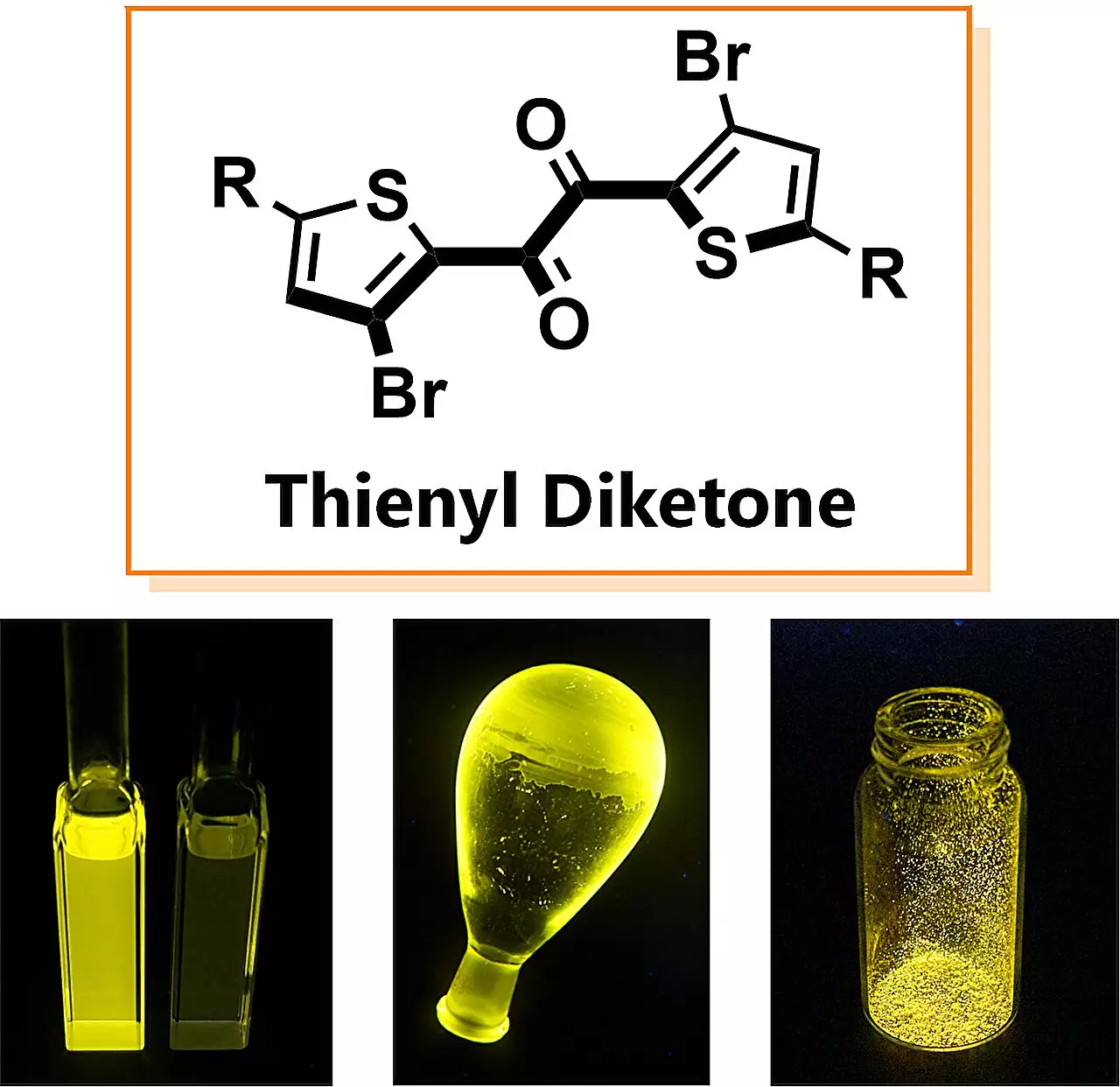Phosphorescence has emerged as a fascinating optical phenomenon with applications ranging from organic electroluminescent displays (OLEDs) to cutting-edge cancer diagnostics. Traditionally, the quest for efficient phosphorescent materials has been mired in the reliance on rare and costly metals like iridium and platinum. These materials, while effective, pose significant challenges related to sustainability and manufacturing costs. Recent breakthroughs, however, are paving the way for organic alternatives capable of achieving high efficiency without these precious resources.
Osaka University’s Breakthrough in Organic Molecules
A recent study spearheaded by researchers at Osaka University has positioned the new organic molecule thienyl diketone at the forefront of this field. This groundbreaking discovery, published in the prestigious journal *Chemical Science*, reveals that thienyl diketone exhibits phosphorescence rates that are over ten times faster than conventional organic materials. This remarkable speed is not merely a numerical triumph; it signifies a potential revolution in how we harness and utilize light in various sectors.
The research team elucidated the intricate mechanisms that contribute to such efficiency, shedding light on the previously obscure processes that govern phosphorescence in organic molecules. By achieving a clearer understanding, this research opens up a wealth of design possibilities for developing phosphorescent materials that sidestep the limitations imposed by metal-based compounds.
The Mechanism Behind the Efficiency
Phosphorescence traditionally involves a transition from a high-energy state to a low-energy state, where competition with non-radiative processes – which dissipate energy as heat – often hampers efficiency. While previous attempts to enhance organic phosphorescence involved specific structural tweaks, they fell short when compared to their metallic counterparts. The inherent struggle between radiative and non-radiative transitions has long stymied progress in this area.
Yosuke Tani, a leading author in this research endeavor, reflected on the serendipity of their discovery. Initially perplexed by thienyl diketone’s superior qualities, the team gradually pieced together the underlying factors explaining its performance. Their research points to a promising future where organic phosphorescent materials may soon rival or even eclipse the capabilities of rare metal-based counterparts.
Expanding the Horizons of Application
The implications of this research extend far beyond mere academic interest. As industries increasingly seek sustainable and cost-effective materials, thienyl diketone’s potential applications in OLED technology, next-generation lighting solutions, and medical diagnostics could spark a major shift in material science. The capacity for these newly designed organic phosphorescent materials to deliver both efficiency and affordability can catalyze innovations in various fields.
The excitement surrounding this discovery is palpable among researchers and industry leaders alike, who recognize that thienyl diketone could herald a new era of technological advancement. The pathway is set for future explorations that can enhance our understanding of phosphorescent mechanisms further, offering a bounty of opportunities for new investigations and applications.
The research conducted by the Osaka University team propels us into an era where efficiency and sustainability in the realm of phosphorescent materials aren’t just aspirational goals—they are achievable, tangible outcomes. The journey thus far has demonstrated the power of inquiry and chance in scientific advancement, leaving us eager for what innovations lie ahead.


Leave a Reply